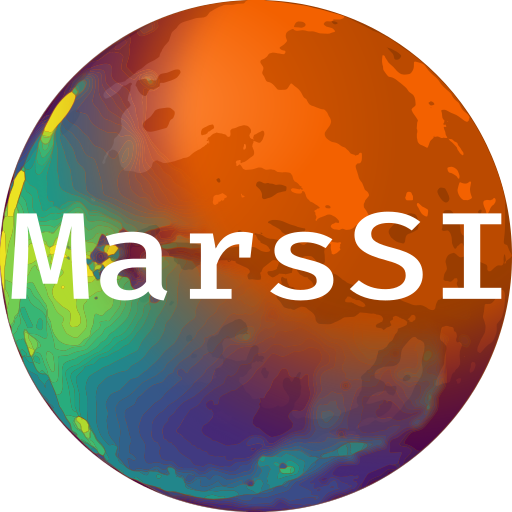Syntax highlighting of
HiRISE
{{https://upload.wikimedia.org/wikipedia/commons/2/2b/HiRISE_Flight_Structure.jpg||align="right",width="240"}}
The High Resolution Imaging Science Experiment (HiRISE) is a telescope working in orbit in the visible wavelengths and producing high resolution images resolving surface details down to 1-meter size (0.25 to 1.3 m/px). The images enable to study for instance the martian geomorphology but also seasonal surface changes.
<<TableOfContents()>>
== Data description ==
The HiRISE camera has 3 different color filtered CCDs: red (“RED”) from 570-830 nm, blue-green (“BG”) less than 580 nm and near-infrared (“IR”) greater than 790 nm. The high-resolution color images enable to distinguish the composition and albedo heterogeneities directly correlated to the geomorphology, complementary to the mineralogic results from the CRISM, HRSC, OMEGA and THEMIS instruments. The RED detectors provide a wide image used for geomorphologic analysis and for stereoanalysis, while the additional detectors are used to create false-color imaging of the central of the swath only (20% of the RED swath width).
Data file description:
* `PSP_005000_1000_RED.JP2` (grayscale mosaic of all RED-filter channels)
* `PSP_005000_1000_COLOR.JP2` (IR, RED, BG 3-color product over center 20% of the RED swath width)
Each JP2 image also has a PDS label (.lbl) providing useful information about the observation such as map projection and viewing information.
== Processing HIRISE data ==
The pipeline for the topographic mapping derived from HiRISE images uses both the USGS ISIS system (the ISIS 3 system) and the commercial stereogrammetric software SOCET SET. The DTMs have a 1-meter spatial resolution and 25 cm vertical precision. For more details about the process used to create HiRISE DTMs, see [[http://onlinelibrary.wiley.com/wol1/doi/10.1029/2007JE003000/full|Kirk, R.L. et al. (2008)]].
== References ==
* HiRISE instrument and data website: http://hirise.lpl.arizona.edu
* HiRISE DTM creation explanation: http://www.uahirise.org/dtm/about.php
* HiRISE instrument description paper: McEwen, A. et al. (2007). J. Geophys. Res., 112, E05S02, doi:10.1029/2005JE002605.
* HiRISE DTM description paper: Kirk, R.L. et al. (2008). J. Geophys. Res., 113, E00A24, doi:10.1029/2007JE003000.
